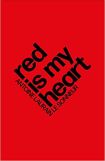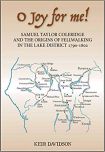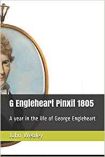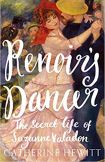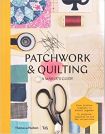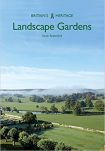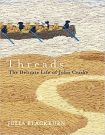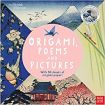Difference between revisions of "Newest Art Reviews"
| (67 intermediate revisions by 2 users not shown) | |||
| Line 1: | Line 1: | ||
| − | + | [[Category:New Reviews|Art]] [[Category:Art|*]]__NOTOC__ <!-- remove --> | |
| − | + | {{Frontpage | |
| − | [[Category:New Reviews|Art]] | + | |isbn=0957181167 |
| − | [[Category:Art|*]] | + | |title=Blue Skies and Boat Trips: The Norfolk of Brian Lewis |
| − | __NOTOC__ | + | |author=Alan Marshall |
| − | {{ | + | |rating=5 |
| − | | | + | |genre=Art |
| − | |title= The | + | |summary=There are few positive things which can be said about a substandard apartment when you’re on holiday but this time, in trying to avoid looking at a problem I found myself looking more closely at a couple of pictures on the walls - and was completely taken by the work of Brian Lewis. I searched online and could only find ‘used’ versions of this book and the print I wanted was ‘not available’. Oh, dear - then a few doors down from the apartment, I found a gift shop with a stack of brand new books - and a framed print of the picture I wanted. |
| − | |rating= 5 | ||
| − | |genre= | ||
| − | |summary= | ||
| − | |||
}} | }} | ||
| − | {{ | + | {{Frontpage |
| − | |author= | + | |author=Antoine Laurain, Le Sonneur and Jane Aitken (translator) |
| − | |title= | + | |title=Red is My Heart |
| − | |rating= | + | |rating=3.5 |
| − | |genre= | + | |genre=Literary Fiction |
| − | |summary= | + | |summary=[[:Category:Antoine Laurain|Antoine Laurain]] books have always been black and white and read in my house. And so was this one, although I could have spelled that more accurately – this one was, and is, black and white and red. Yes, he has an artistic collaborator on this piece, and I think it's possible to say not one page lacks the influence of some striking visual ideas. |
| − | | | + | |isbn=1913547183 |
}} | }} | ||
| − | {{ | + | {{Frontpage |
| − | | | + | |isbn=1912242052 |
| − | |title= | + | |title=O Joy for me! |
| − | |rating= | + | |author=Keir Davidson |
| − | |genre= | + | |rating=3 |
| − | |summary= | + | |genre=Art |
| − | + | |summary=''Oh Joy for me!'' gives Coleridge credit for being ''the first person to walk the mountains alone, not because he had to for work, as a miner, quarryman, shepherd or pack-horse driver, but because he wanted to for pleasure and adventure. His rapturous encounters with their natural beauty, and its literary consequences, changed our view of the world''. | |
}} | }} | ||
| − | {{ | + | {{Frontpage |
| − | | | + | |isbn=1980891117 |
| − | |title= | + | |title=G Engleheart Pinxit 1805: A year in the life of George Engleheart |
| + | |author=John Webley | ||
|rating=4.5 | |rating=4.5 | ||
|genre=Art | |genre=Art | ||
| − | |summary= | + | |summary=George Engleheart was one of the leading portrait miniaturists of Georgian London, with a career lasting from the 1770s to the Regency era. He was also one of the most prolific, painting nearly 5,000 miniatures altogether (over twenty of them being of King George III). Throughout most of that time he carefully recorded the names of each of his clients, and subsequently transcribed them into what is referred to as his fee book. |
| − | |||
}} | }} | ||
| − | {{ | + | {{Frontpage |
| − | | | + | |isbn=Hewitt_Renoir |
| − | |title= | + | |title=Renoir's Dancer: The Secret Life of Suzanne Valadon |
| + | |author=Catherine Hewitt | ||
|rating=4.5 | |rating=4.5 | ||
| − | |genre= | + | |genre=Art |
| − | |summary= | + | |summary=Deep in the rural parts of France in the 1860s, you would never really expect to find someone who would come to embody a full artistic period – and not just a movement at that, but a full generation of both creative and societal change. And if you were to expect that someone, they would like as not be male. But almost stumbling into the hedonistic culture of Montmartre came Marie-Clementine Valadon. She started in the circus that first caught her teenaged eye, although her gymnastic career was short-lived. But what she did have from that was the poise to be an appealing model for some seriously important painters and a natural beauty and figure to appeal to both them and their audiences. And what she also had, much to the surprise of many and the distaste of some, was artistic talent of her own… |
| − | |||
}} | }} | ||
| − | {{ | + | {{Frontpage |
| − | | | + | |isbn=Murakami_Music |
| − | |title= | + | |title=Absolutely on Music: Conversations with Seiji Ozawa |
| − | |rating= | + | |author=Haruki Murakami and Seiji Ozawa |
| − | |genre= | + | |rating=3.5 |
| − | |summary= | + | |genre=Art |
| − | + | |summary=Murakami loves music, any reader of his could tell you as much. Norwegian Wood was named after a Beatles song (albeit one not very well known) and After Dark is framed by a music soundtrack in a brilliant display of atmospheric setting. With this, all that love is here. And like all who have a good taste in music, Murakami's is eclectic and very well considered. I found myself looking up musicians after reading this because I found many of his opinions quite convincing. | |
| − | |||
| − | |||
| − | |||
}} | }} | ||
| − | {{ | + | {{Frontpage |
| − | | | + | |isbn=Ravilious_Recent |
| − | |title= | + | |title=The Recent Past |
| + | |author=James Ravilious | ||
|rating=5 | |rating=5 | ||
| − | |genre= | + | |genre=Art |
| − | |summary= | + | |summary=James, son of the war artist Eric Ravilious, inherited his father's artistic talents. Although he was a gifted painter, his main career was to be as a photographer. |
| − | |||
}} | }} | ||
| − | {{ | + | {{Frontpage |
| − | | | + | |isbn=Wood_Gothic |
| − | |title= | + | |title=American Gothic: The Life of Grant Wood |
| − | |rating=5 | + | |author=Susan Wood and Ross MacDonald |
| + | |rating=4.5 | ||
|genre=Art | |genre=Art | ||
| − | |summary= | + | |summary=Who won a national prize for a crayon drawing of three oak leaves before he was properly in his teens? Who sought acclaim as an artist and came to Europe to study from the greats, only to reject all they had to offer? Who instinctively knew a picture of his dentist (yes, his dentist) would be more appealing and say more to people than floating water lilies and frilly ballet dancers? The answer in all cases was Grant Wood, practically the most well-known painter in America at one time, and still the best, alongside Edward Hopper, at presenting his world minus any Modernist trappings. |
| − | |||
}} | }} | ||
| − | {{ | + | {{Frontpage |
| − | | | + | |isbn=V&A_Patchwork |
| − | |title= | + | |title=Patchwork and Quilting: A Maker's Guide |
| − | + | |author=Victoria and Albert Museum | |
| − | |||
| − | |||
| − | |||
| − | |||
| − | |||
| − | |author= | ||
| − | |||
|rating=4.5 | |rating=4.5 | ||
| − | |genre= | + | |genre=Art |
| − | |summary= | + | |summary=Patchwork is a magical craft: you can take relatively small pieces of material and turn them into another piece of material with an entirely different pattern. Quilting converts a topper and a backing fabric with some wadding in between into a fabric of an entirely different weight. Combine the two crafts and you have something more than magical, occasionally fashionable but always deeply satisfying. But where to start, when there are so many different styles of both crafts? One answer is to read ''Patchwork and Quilting: A Maker's Guide'' which looks - as the cover says - at styles from Italian trapunto to Korean jogakbo and then delivers fifteen projects inspired by the V&A collections. |
| − | |||
}} | }} | ||
| − | {{ | + | {{Frontpage |
| − | | | + | |isbn=Rutherford_Landscape |
| − | |title= | + | |title=Landscape Gardens |
| + | |author=Sarah Rutherford | ||
|rating=4 | |rating=4 | ||
| − | |genre= | + | |genre=Art |
| − | |summary= | + | |summary=My first experience of a ''big'' garden was Versailles as a teenager and whilst I was impressed, I didn't really like it. I felt stifled and strangely underwhelmed by the flatness of it all. As luck would have it I then saw Hampton Court and it was official: I was off big gardens. It would be many years before I revised my opinion. On a trip to Harewood House, it was too hot a day to be corralled into the house, so I wandered the gardens and found they were delightful. I felt uplifted. Then a cricket match at Stowe gave me the opportunity to walk the grounds for over an hour. I was completely won over and a devotee of Lancelot 'Capability' Brown. Sarah Rutherford's ''Landscape Gardens'' was an opportunity to put him in context. |
| − | |||
}} | }} | ||
| − | {{ | + | {{Frontpage |
| − | | | + | |isbn=Barrie_Peter |
| − | |title= | + | |title=Peter Pan and Wendy |
| − | |rating= | + | |author=J M Barrie and Robert Ingpen |
| − | |genre= | + | |rating=4 |
| − | |summary= | + | |genre=Art |
| − | + | |summary=It's a childhood staple - the story of Wendy, John and Michael Darling and their beloved nurse, Nana the Newfoundland dog who took them to school each day. It's George Darling, their father, who makes the mistake when he locks Nana in the yard and the children are whisked away to Neverland by Peter Pan and Tinkerbell. There's a wonderful mix of characters, from Peter Pan, the boy who never wants to grow up, Tinkerbell, the rather unpleasant fairy, Captain Hook, Tiger Lily, the lost boys and - of course - Wendy, but then it wouldn't have been a classic since the original stage production in 1904 and the novel of 1911 if it were otherwise. | |
}} | }} | ||
| − | {{ | + | {{Frontpage |
| − | |title= | + | |isbn=Grahame_Wind |
| − | |author= | + | |title=The Wind in The Willows |
| − | |rating=4 | + | |author=Kenneth Grahame and Robert Ingpen |
| − | |genre= | + | |rating=4 |
| − | |summary= | + | |genre=Art |
| − | + | |summary=Kenneth Grahame's ''The Wind in the Willows'' was one of the defining books of my childhood and more than sixty years after I first read the book I've just recently passed it onto another young reader. Since the book was first published in 1908 there have been some notable illustrators: Paul Bransom provided illustrations for the 1913 edition, Ernest H Shepard (perhaps better known for his illustrations of ''Winnie the Pooh'') in 1933, Arthur Rackham (possibly the leading illustrator from the golden age of book illustration) in 1940 and Robert Ingpen who illustrated the centenary edition of ''The Wind in the Willows''. | |
}} | }} | ||
| − | {{ | + | {{Frontpage |
| − | |title= | + | |isbn=Jenkins_100 |
| − | |author= | + | |title=Britain's 100 Best Railway Stations |
| + | |author=Simon Jenkins | ||
|rating=5 | |rating=5 | ||
|genre=Art | |genre=Art | ||
| − | |summary= | + | |summary=In the mid-twentieth century, the railway was something which harked back to the Victorian age with trains being supplanted by cars and planes, but steam was being replaced by oil, even then and in the twenty-first-century oil is giving way to electricity. It's cleaner, more environmentally friendly and the stations which we'd all rushed through as quickly as possible, keen to escape their grime, were restored and became places to be admired, possibly even lingered in. Simon Jenkins has chosen his hundred best railway stations. |
| − | |||
}} | }} | ||
| − | {{ | + | {{Frontpage |
| − | | | + | |isbn=Hurst_Norfolk |
| − | |title= | + | |title=On My Way: Norfolk Coastal Walks |
| − | |rating= | + | |author=John Hurst |
| + | |rating=4 | ||
|genre=Art | |genre=Art | ||
| − | |summary= | + | |summary=It was pure serendipity: after a five-hour drive, we were, annoyingly, left with an hour to fill in Blakeney before we could have the keys to our holiday cottage. There was an art exhibition in the church hall, so we went in - and found a display of the most gorgeous pictures. I'd cheerfully have bought every one and hung them on our walls, but thought that I would have to make do with a couple of greetings cards when I saw ''On My Way: Norfolk Coastal Walks'' and I couldn't resist buying it. |
| − | |||
}} | }} | ||
| − | {{ | + | {{Frontpage |
| − | | | + | |isbn=Blackburn_Threads |
| − | |title= | + | |title=Threads: The Delicate Life of John Craske |
| − | |rating=4 | + | |author=Julia Blackburn |
| − | |genre= | + | |rating=4 |
| − | |summary= | + | |genre=Art |
| − | + | |summary=John Craske was a fisherman, from a family of fishermen, who became too ill to go to sea. He was born in Sheringham on the north Norfolk coast in 1881 and would eventually die in the Norwich hospital in 1943 after a life which could have been defined by ill health. There were various explanations for what ailed him, what caused him to sink into a stupor, sometimes for years at a time and he was on occasions described as 'an imbecile'. But John had a natural artistic talent, albeit that his work had to be done on the available surfaces in his home. Chair seats, window sills, the backs of doors all carried his wonderful pictures of the sea. Then he moved on to embroidery, producing wonderful pictures of the Norfolk coast - and, most famously, of the evacuation at Dunkirk. | |
}} | }} | ||
| − | {{ | + | {{Frontpage |
| − | |title= | + | |isbn=Bray Titania |
| − | |author= | + | |title=Titania and Oberon |
| + | |author=Jo Manton, Phyllis Bray and David Buckman | ||
|rating=4 | |rating=4 | ||
| − | |genre= | + | |genre=Art |
| − | |summary= | + | |summary=''Equus, Waiting for Godot and A Mid-summer Night's Dream'' – three very distinctive plays, and my favourite three, out of which you won't often get me choosing just one. But were I to do so, it might actually be the last, for the simple reason that I would delight in playing any and all characters from it. Yes, I know Hermia and Helena look a bit implausible now – but I put it to you stranger things happen on stage… Some of the strangest things involve a player himself, a lowly actor who gets given an ass's head and is forced to be enamoured of a fairy queen. It's this section of the play that this book concentrates on, in quite stunning form. |
| − | |||
| − | |||
| − | |||
| − | |||
| − | |||
| − | |||
| − | |||
| − | |||
| − | |||
}} | }} | ||
| − | {{ | + | {{Frontpage |
| − | | | + | |isbn=BM_Origami |
| − | | | + | |title=Origami, Poems and Pictures |
| − | + | |author=The British Museum | |
| − | |||
| − | |||
| − | |||
| − | |||
| − | |||
| − | |author= | ||
| − | |||
|rating=5 | |rating=5 | ||
| − | |genre= | + | |genre=Art |
| − | |summary= | + | |summary=Sometimes you find a delight of a book. On an afternoon when it was unseasonably cold and decidedly wet I discovered ''Origami, Poems and Pictures'' and I was transported to Japan. As the title suggests we're looking at three celebrated arts and crafts: the ancient art of paper folding, haiku poetry and painting. I'll confess that it was the origami which caught my attention, but I was surprised by the extent to which the rest of the book caught my imagination. We begin with something very simple: a boat and in case you're worried, all the entries have a degree of difficulty (from 'simple' through to 'tricky') and this one is at the lowest level. |
| − | + | }}' | |
| − | }} | + | {{Frontpage |
| − | {{ | + | |isbn=Foreman_Travel |
| − | | | + | |title=Travels With My Sketchbook |
| − | |title= | + | |author=Michael Foreman |
|rating=4 | |rating=4 | ||
|genre=Art | |genre=Art | ||
| − | |summary= | + | |summary=I guess the best children's literature can do away with complete veracity, as long as it has something about it that is recognisable – a little of the spirit, heart and character of the real thing, whatever it may be. And if that's the case then it definitely applies to children's literature illustrations, such as those provided close on two hundred times by [[:Category:Michael Foreman|Michael Foreman]]. This prolific artist leapt at a scholarship in the US when he'd completed his official, formal studies, and it would appear – huge credits list regardless – that he's never stopped moving since, as this book takes us to all corners of the world, and back home again. |
| − | |||
}} | }} | ||
| − | {{ | + | {{Frontpage |
| − | | | + | |isbn=Biesty Trains |
| − | |title= | + | |title=Stephen Biesty's Trains |
| − | + | |author=Ian Graham and Stephen Biesty | |
| − | |||
| − | |||
| − | |||
| − | |||
| − | |||
| − | |author= | ||
| − | |||
|rating=5 | |rating=5 | ||
|genre=Art | |genre=Art | ||
| − | |summary= | + | |summary=Trains look imposing, but true fans (little boys, usually from about three years old and upwards) want to know what lies beneath the skin which you can see. They want to know how it works. Getting to grips with one in real life is quite a big ask, but the next best thing is ''Stephen Biesty's Trains'' which features trains from all over the world and spanning the early steam train (complete with cowcatcher) right through to the trains of the future which can reach a speed of 430 kph and don't even run on rails. Once the train reaches a speed of 150 kph the wheels are raised and the train is held up by magnetic forces alone. |
| − | |||
| − | |||
| − | |||
| − | |||
| − | |||
| − | |||
| − | |||
| − | |||
| − | |||
}} | }} | ||
| + | Move on to [[Newest Autobiography Reviews]] | ||
Latest revision as of 12:49, 2 June 2023
Review ofBlue Skies and Boat Trips: The Norfolk of Brian Lewis by Alan MarshallThere are few positive things which can be said about a substandard apartment when you’re on holiday but this time, in trying to avoid looking at a problem I found myself looking more closely at a couple of pictures on the walls - and was completely taken by the work of Brian Lewis. I searched online and could only find ‘used’ versions of this book and the print I wanted was ‘not available’. Oh, dear - then a few doors down from the apartment, I found a gift shop with a stack of brand new books - and a framed print of the picture I wanted. Full Review |
Review ofRed is My Heart by Antoine Laurain, Le Sonneur and Jane Aitken (translator)Antoine Laurain books have always been black and white and read in my house. And so was this one, although I could have spelled that more accurately – this one was, and is, black and white and red. Yes, he has an artistic collaborator on this piece, and I think it's possible to say not one page lacks the influence of some striking visual ideas. Full Review |
Review ofO Joy for me! by Keir DavidsonOh Joy for me! gives Coleridge credit for being the first person to walk the mountains alone, not because he had to for work, as a miner, quarryman, shepherd or pack-horse driver, but because he wanted to for pleasure and adventure. His rapturous encounters with their natural beauty, and its literary consequences, changed our view of the world. Full Review |
Review ofG Engleheart Pinxit 1805: A year in the life of George Engleheart by John WebleyGeorge Engleheart was one of the leading portrait miniaturists of Georgian London, with a career lasting from the 1770s to the Regency era. He was also one of the most prolific, painting nearly 5,000 miniatures altogether (over twenty of them being of King George III). Throughout most of that time he carefully recorded the names of each of his clients, and subsequently transcribed them into what is referred to as his fee book. Full Review |
Review ofRenoir's Dancer: The Secret Life of Suzanne Valadon by Catherine HewittDeep in the rural parts of France in the 1860s, you would never really expect to find someone who would come to embody a full artistic period – and not just a movement at that, but a full generation of both creative and societal change. And if you were to expect that someone, they would like as not be male. But almost stumbling into the hedonistic culture of Montmartre came Marie-Clementine Valadon. She started in the circus that first caught her teenaged eye, although her gymnastic career was short-lived. But what she did have from that was the poise to be an appealing model for some seriously important painters and a natural beauty and figure to appeal to both them and their audiences. And what she also had, much to the surprise of many and the distaste of some, was artistic talent of her own… Full Review |
Review ofAbsolutely on Music: Conversations with Seiji Ozawa by Haruki Murakami and Seiji OzawaMurakami loves music, any reader of his could tell you as much. Norwegian Wood was named after a Beatles song (albeit one not very well known) and After Dark is framed by a music soundtrack in a brilliant display of atmospheric setting. With this, all that love is here. And like all who have a good taste in music, Murakami's is eclectic and very well considered. I found myself looking up musicians after reading this because I found many of his opinions quite convincing. Full Review |
Review ofThe Recent Past by James RaviliousJames, son of the war artist Eric Ravilious, inherited his father's artistic talents. Although he was a gifted painter, his main career was to be as a photographer. Full Review |
Review ofAmerican Gothic: The Life of Grant Wood by Susan Wood and Ross MacDonaldWho won a national prize for a crayon drawing of three oak leaves before he was properly in his teens? Who sought acclaim as an artist and came to Europe to study from the greats, only to reject all they had to offer? Who instinctively knew a picture of his dentist (yes, his dentist) would be more appealing and say more to people than floating water lilies and frilly ballet dancers? The answer in all cases was Grant Wood, practically the most well-known painter in America at one time, and still the best, alongside Edward Hopper, at presenting his world minus any Modernist trappings. Full Review |
Review ofPatchwork and Quilting: A Maker's Guide by Victoria and Albert MuseumPatchwork is a magical craft: you can take relatively small pieces of material and turn them into another piece of material with an entirely different pattern. Quilting converts a topper and a backing fabric with some wadding in between into a fabric of an entirely different weight. Combine the two crafts and you have something more than magical, occasionally fashionable but always deeply satisfying. But where to start, when there are so many different styles of both crafts? One answer is to read Patchwork and Quilting: A Maker's Guide which looks - as the cover says - at styles from Italian trapunto to Korean jogakbo and then delivers fifteen projects inspired by the V&A collections. Full Review |
Review ofLandscape Gardens by Sarah RutherfordMy first experience of a big garden was Versailles as a teenager and whilst I was impressed, I didn't really like it. I felt stifled and strangely underwhelmed by the flatness of it all. As luck would have it I then saw Hampton Court and it was official: I was off big gardens. It would be many years before I revised my opinion. On a trip to Harewood House, it was too hot a day to be corralled into the house, so I wandered the gardens and found they were delightful. I felt uplifted. Then a cricket match at Stowe gave me the opportunity to walk the grounds for over an hour. I was completely won over and a devotee of Lancelot 'Capability' Brown. Sarah Rutherford's Landscape Gardens was an opportunity to put him in context. Full Review |
Review ofPeter Pan and Wendy by J M Barrie and Robert IngpenIt's a childhood staple - the story of Wendy, John and Michael Darling and their beloved nurse, Nana the Newfoundland dog who took them to school each day. It's George Darling, their father, who makes the mistake when he locks Nana in the yard and the children are whisked away to Neverland by Peter Pan and Tinkerbell. There's a wonderful mix of characters, from Peter Pan, the boy who never wants to grow up, Tinkerbell, the rather unpleasant fairy, Captain Hook, Tiger Lily, the lost boys and - of course - Wendy, but then it wouldn't have been a classic since the original stage production in 1904 and the novel of 1911 if it were otherwise. Full Review |
Review ofThe Wind in The Willows by Kenneth Grahame and Robert IngpenKenneth Grahame's The Wind in the Willows was one of the defining books of my childhood and more than sixty years after I first read the book I've just recently passed it onto another young reader. Since the book was first published in 1908 there have been some notable illustrators: Paul Bransom provided illustrations for the 1913 edition, Ernest H Shepard (perhaps better known for his illustrations of Winnie the Pooh) in 1933, Arthur Rackham (possibly the leading illustrator from the golden age of book illustration) in 1940 and Robert Ingpen who illustrated the centenary edition of The Wind in the Willows. Full Review |
Review ofBritain's 100 Best Railway Stations by Simon JenkinsIn the mid-twentieth century, the railway was something which harked back to the Victorian age with trains being supplanted by cars and planes, but steam was being replaced by oil, even then and in the twenty-first-century oil is giving way to electricity. It's cleaner, more environmentally friendly and the stations which we'd all rushed through as quickly as possible, keen to escape their grime, were restored and became places to be admired, possibly even lingered in. Simon Jenkins has chosen his hundred best railway stations. Full Review |
Review ofOn My Way: Norfolk Coastal Walks by John HurstIt was pure serendipity: after a five-hour drive, we were, annoyingly, left with an hour to fill in Blakeney before we could have the keys to our holiday cottage. There was an art exhibition in the church hall, so we went in - and found a display of the most gorgeous pictures. I'd cheerfully have bought every one and hung them on our walls, but thought that I would have to make do with a couple of greetings cards when I saw On My Way: Norfolk Coastal Walks and I couldn't resist buying it. Full Review |
Review ofThreads: The Delicate Life of John Craske by Julia BlackburnJohn Craske was a fisherman, from a family of fishermen, who became too ill to go to sea. He was born in Sheringham on the north Norfolk coast in 1881 and would eventually die in the Norwich hospital in 1943 after a life which could have been defined by ill health. There were various explanations for what ailed him, what caused him to sink into a stupor, sometimes for years at a time and he was on occasions described as 'an imbecile'. But John had a natural artistic talent, albeit that his work had to be done on the available surfaces in his home. Chair seats, window sills, the backs of doors all carried his wonderful pictures of the sea. Then he moved on to embroidery, producing wonderful pictures of the Norfolk coast - and, most famously, of the evacuation at Dunkirk. Full Review |
Review ofTitania and Oberon by Jo Manton, Phyllis Bray and David BuckmanEquus, Waiting for Godot and A Mid-summer Night's Dream – three very distinctive plays, and my favourite three, out of which you won't often get me choosing just one. But were I to do so, it might actually be the last, for the simple reason that I would delight in playing any and all characters from it. Yes, I know Hermia and Helena look a bit implausible now – but I put it to you stranger things happen on stage… Some of the strangest things involve a player himself, a lowly actor who gets given an ass's head and is forced to be enamoured of a fairy queen. It's this section of the play that this book concentrates on, in quite stunning form. Full Review |
Review ofOrigami, Poems and Pictures by The British MuseumSometimes you find a delight of a book. On an afternoon when it was unseasonably cold and decidedly wet I discovered Origami, Poems and Pictures and I was transported to Japan. As the title suggests we're looking at three celebrated arts and crafts: the ancient art of paper folding, haiku poetry and painting. I'll confess that it was the origami which caught my attention, but I was surprised by the extent to which the rest of the book caught my imagination. We begin with something very simple: a boat and in case you're worried, all the entries have a degree of difficulty (from 'simple' through to 'tricky') and this one is at the lowest level. Full Review |
'
Review ofTravels With My Sketchbook by Michael ForemanI guess the best children's literature can do away with complete veracity, as long as it has something about it that is recognisable – a little of the spirit, heart and character of the real thing, whatever it may be. And if that's the case then it definitely applies to children's literature illustrations, such as those provided close on two hundred times by Michael Foreman. This prolific artist leapt at a scholarship in the US when he'd completed his official, formal studies, and it would appear – huge credits list regardless – that he's never stopped moving since, as this book takes us to all corners of the world, and back home again. Full Review |
Review ofStephen Biesty's Trains by Ian Graham and Stephen BiestyTrains look imposing, but true fans (little boys, usually from about three years old and upwards) want to know what lies beneath the skin which you can see. They want to know how it works. Getting to grips with one in real life is quite a big ask, but the next best thing is Stephen Biesty's Trains which features trains from all over the world and spanning the early steam train (complete with cowcatcher) right through to the trains of the future which can reach a speed of 430 kph and don't even run on rails. Once the train reaches a speed of 150 kph the wheels are raised and the train is held up by magnetic forces alone. Full Review |
Move on to Newest Autobiography Reviews

